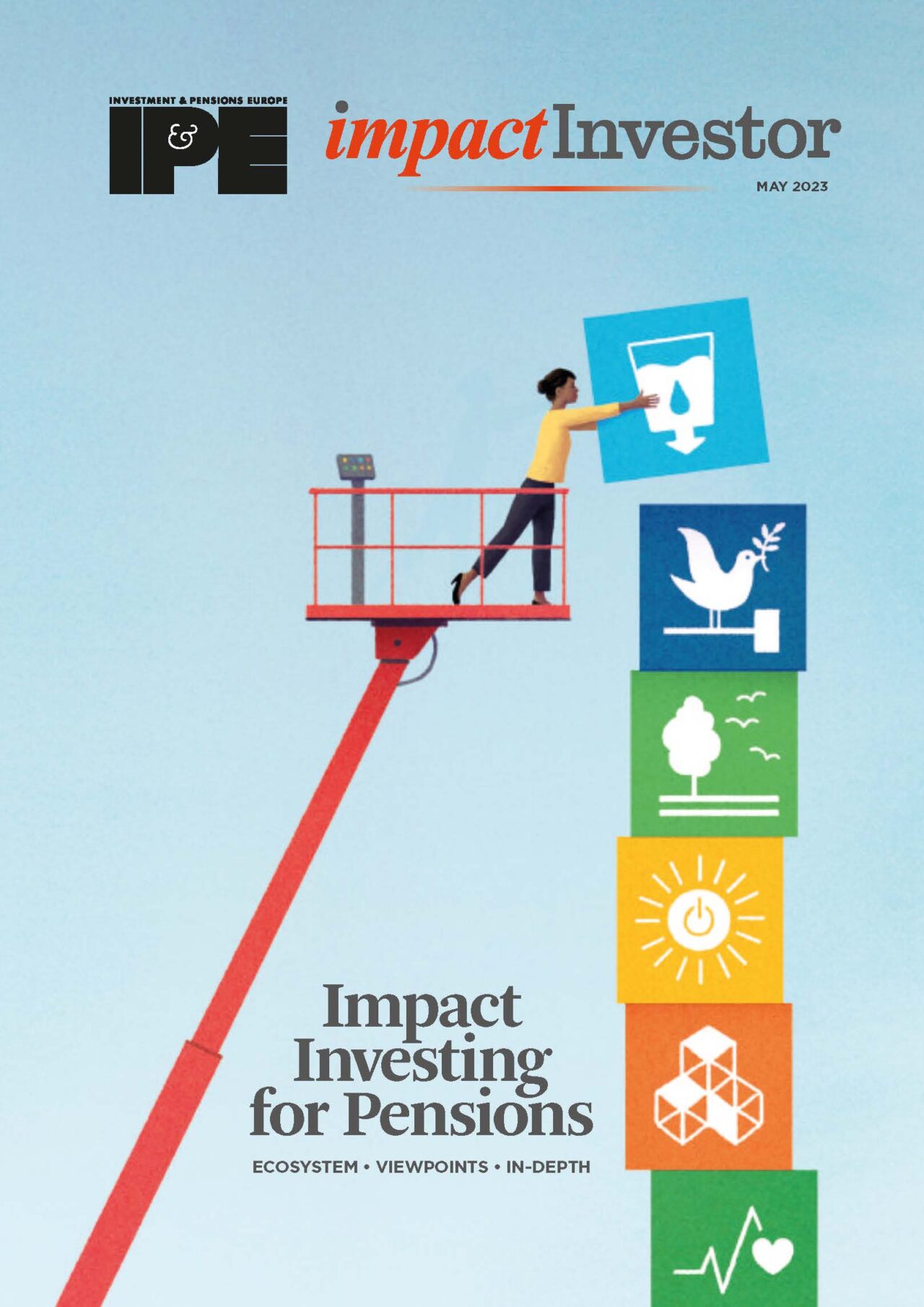Place-based investing is now central to social impact investing in the UK and gaining strong pension fund support. Many of the lessons learned there can be applied elsewhere in Europe.

The UK Government has encouraged place-based investing (PBI) as part of its ‘Levelling up’ agenda, together with the Impact Investing Institute (III) which explains the concept as follows: “An economy that works for all requires an intentional approach to place. Places become ‘underperforming,’ ‘left behind’ and ‘underinvested’ as a result of a complex combination of factors which culminate in market failure and vicious cycles of asset depreciation.
The III’s white paper ‘Scaling up institutional investment for place-based impact’ focuses on getting capital to underinvested places, through real estate (from social and affordable housing through to commercial property), infrastructure (including renewable energy generation), and SME finance.
PBI in the UK
To get a clear understanding of how it works in the UK we sat down with one of PBI’s seasoned pioneers. Igloo Regeneration has been involved in PBI for the last 20 years. Peter Connolly, chief executive officer, tells us the model they operate is “to work in partnership with local authorities to regenerate edge of centre sites in under invested cities. We provide much needed sustainable housing with a focus on social impact and community”.

Igloo’s ‘Footprint Policy’ embeds social impact and sustainability goals into everything it does. The company works in many of the UK’s post-industrial cities including Glasgow, Newcastle, Sunderland, some of the suburbs of London, and Leeds. Units are priced at mid-market level which succeeds in attracting key workers and rejuvenating city centres.
In Leeds, Igloo has been very involved in regenerating the Holbrook area and making it a vibrant part of the city centre. They have built over 450 units there, and over the last decade a total of some 3000 units across the UK.
“We are predominantly residential led but all developments tend to have a mixed use element as we also want a significant proportion of community amenity and facilities,” says Connolly. For example, in one of Igloo’s current developments in Newcastle the proportion between residential and business/community spaces is as high as 50:50.
Igloo works very closely with local government. Connolly explains: “We are not looking for favours, but we are looking for locations where policy is in motion to regenerate areas.”
UK pension funds turning to PBI
UK local authority pension funds are now seeking to allocate 5% of their funds to PBI. “What will be exciting is when we can persuade some of them to do more than that, and also when we can start to persuade private sector pension funds to do something similar,” says Connolly.
There are signs of success. A survey from Gresham House found that 74% of pension professionals were looking at PBI, while another recent study found 78% of pension funds believe the UK’s target for housebuilding can only be met if institutional investors become more involved in funding.
Connolly is jubilant. “Pension funds are getting more and more involved in what we do and frankly that’s the one thing that’s kept me working. My big hope is that we move to a world where we have professional social impact companies such as ourselves driving the development market. We hope that more property developers will move into this space and also that as a result, more pension funds will become involved.”
Currently Igloo is entirely operating in the UK, but new parent company PFP Capital has overseas ambitions and it is quite possible it will explore European opportunities in the future. Igloo has already been involved in a consulting role for several European regeneration projects.
European initiatives
“Historically this approach has very much been concentrated on emerging markets, but there are now opportunities now in developed markets. In the UK, Europe, and the United States. It is a great diversify in a portfolio. PBI definitely has a role for investors who are looking to have impact by putting their capital to work,” says Samantha Steele, private markets director leading impact strategies at Russell investments.
She is seeing “a lot of PBI funds being launched which are particularly attractive for investors looking to make smaller allocations of perhaps £5-10m”. Perhaps a reflection of the changing mindset on impact investing in general. Many of these funds have been UK focused and real estate oriented. “However, we are seeing more funds being launched in continental Europe such as social housing funds in Ger-many and the Netherlands.”
“We are also seeing PBI move away from just being real estate,” says Steele. There are now PBI clean energy off e-rings in Europe. It is also important to remember that “we increasingly think of infrastructure in a broader sense and include social infrastructure. We are expecting more PBI initiatives in this area with education and community and leisure centres being the goal”.
Given their crucial role, she feels “it is important that we have a good alignment between the objectives of local authorities and private investors. That managers have KPIs that are clearly tied to the impact which they are targeting, and that this is reflected in their fees”. Interestingly Igloo has varied fee structures which can often combine performance related fees for financial returns and for social impact.

Annachiara Marcandalli, European head of sustainability and impact at Cambridge Associates, has been working for many years with investors interested in place-based investment.
She finds using a bulls-eye framework very useful. “At the centre you have the ideal perfect investment: the investment that benefits the exact right community with the perfect risk/return characteristics. The problem with the ideal centre is, that it limits the opportunity-set excessively.”
Marcandalli therefore encourages clients to avoid only pursuing perfect at the expense of good. “Clients that are serious about place-based investing know that there are always trade-off s to be made. They have learnt, for example, that it is worthwhile to under-write a private equity opportunity that has a slightly wider geographical remit or to accept marginally higher risk for having local social housing.”
Investment managers moving in
European investment managers are increasingly taking a place-based approach.
This year DSB Ejendomsudvikling, NREP, Industriens Pension and Novo Holdings entered into a joint venture agreement to redevelop Jernbanebyen (the Railway District) in Copenhagen. “We [will] particularly focus on creating a more sustainable city life, both socially and environmentally. Jernbanebyen will have a diverse mix of families with children and older people,” explains Thomas Riise-Jakobsen, partner, NREP.

Mathieu Elshout, head of sustainability and impact investing at German giant Patrizia, says “when it comes to real assets [impact investing] is just starting. Place-based investing can be a solution here”.
To address this Patrizia launched its Sustainable Communities Fund last year, raising some €213m of capital with an eventual target of €500m. Fund manager Marleen Bikker-Bekkers, tell us it has three main elements. “Affordable housing, green real estate, and what we call ‘inclusion and connectivity’. We thought it was important to include this third element because of the increasing evidence of the number of people who feel lonely and disconnected from their local communities.”
The fund has two initial projects in Dublin, but the intention is to become involved in PBI across Europe. “We are certainly looking at the UK, France, Spain, Belgium, Germany, and the Nordics.” Interest is high from European pension funds thanks to “the lack of available product in the real assets space. Investing of this kind clearly creates an opportunity and is particularly recognised by public pension funds”. Two of the fund’s main investors are two pension funds in Denmark – PKA and AP Pension.
Working closely with the leaders of the local community, whether that is housing associations or local government, is as important to Patrizia as it is to Igloo. “They have a good understanding of where the needs are, especially those operating social infrastructure. We need to build partnerships,” Bikker-Bekkers adds. Of course, investors have a diff e-rent perspective to local government and “we need to work together to achieve the goals, listening to each other, work with a partnership mindset”.
In terms of impact measurement, Patrizia’s fees are not directly tied to the impact, but it does have quarterly impact reporting.
Bikker-Bekkers concludes: “We believe impact investing in general and subsegments such as place-based investing will grow considerably in the future, which is a good thing because we have imminent societal issues that we can help solve with allocating private capital to them in this way.”
This article is part of the editorial content of the Impact Investing for Pensions report. You can download a digital copy of the report here.







